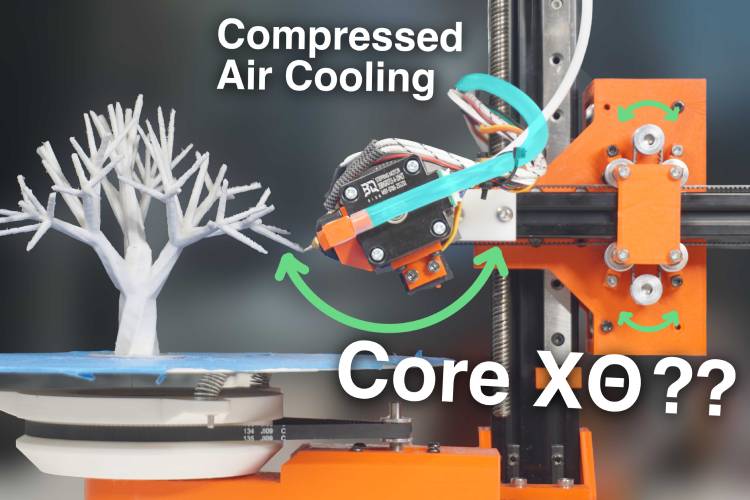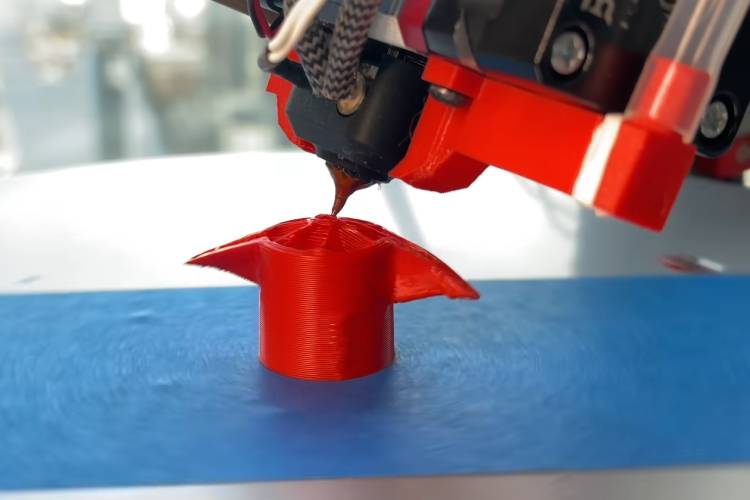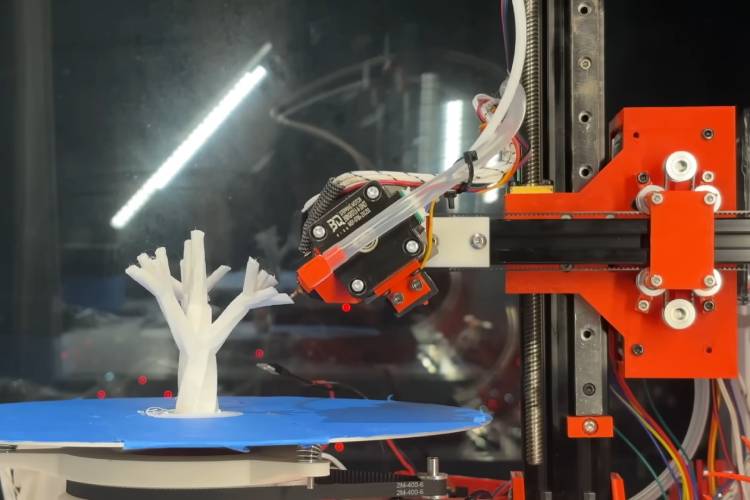
3D printing has revolutionised modern manufacturing and prototyping, becoming a staple across industries and hobbyist communities alike. The sheer variety of 3D printers on the market today is staggering, with the majority of them employing Cartesian or planar kinematics. These systems operate within the familiar X, Y, and Z axes, building objects layer by flat layer. Other innovative designs, such as CoreXY and delta printers, have gained traction for their unique approaches to motion and efficiency. However, all of these systems share a common limitation: they operate within the constraints of flat-layered slicing. That’s where Joshua Bird’s all-new four-axis 3D printer with entirely unique "core-RΘ" kinematic system comes in, challenging these conventions with a design unlike anything seen before.

Unlike the conventional Cartesian and CoreXY setups, which operate in three linear axes (X, Y, and Z), Bird’s design employs a polar coordinate system, integrating a circular build plate (C axis), vertical motion (Z axis), horizontal motion (X axis), and a rotating print head (B axis). This combination allows for non-planar printing, creating objects with radial layers instead of the typical flat, horizontal slices. Such an arrangement opens up new possibilities, such as printing overhangs greater than 90 degrees and even producing complex geometries like tree branches or bridges without the need for support structures.

Built with affordability and accessibility in mind, Bird’s printer costs just $300–$400 in parts and is entirely open-source. Its motion system relies on belts, rails, and sensorless homing, minimizing wiring complexity. To create the appropriate Gcode files, Bird developed a custom Radial Non-Planar Slicer capable of generating G-code compatible with the Duet3D firmware, which supports the printer’s unconventional axes with some custom configurations. While the design offers significant advantages, such as better handling of overhangs and reduced support requirements, challenges remain, particularly in part cooling and general applicability to all geometries. To overcome this Birs used an aquarium air pump for cooling the cooling rather than using normal cooling fans. This allowed the 270° exclusion zone, which ensures that the tool head doesn’t hit the build plate while rotating. Nevertheless, Bird’s creation exemplifies how pushing the boundaries of traditional 3D printing can inspire groundbreaking developments in the field. More details can be found in his YouTube video with links to the GitHub repositories in the video description.

